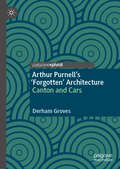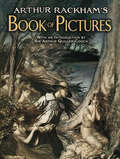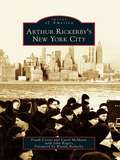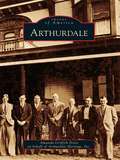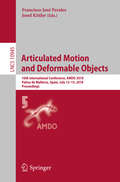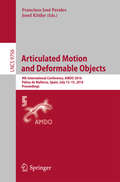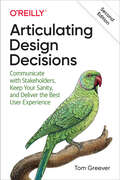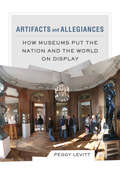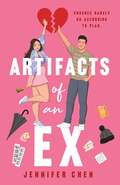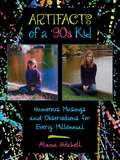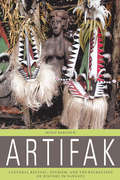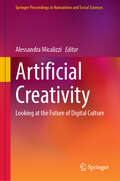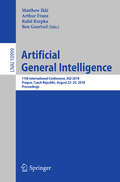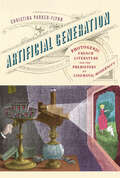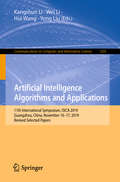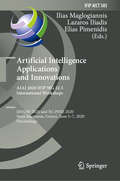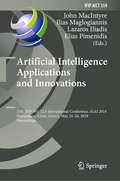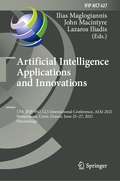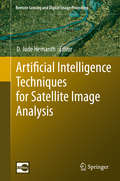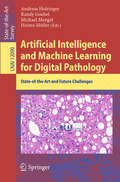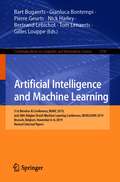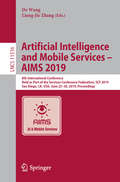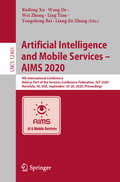- Table View
- List View
Arthur Purnell’s ‘Forgotten’ Architecture: Canton and Cars
by Derham Groves“Derham Groves has written this illuminating story of an exceptional but hitherto unsung Australian architect whose distinctive designs in China as well as his homeland may still be seen and enjoyed. In this book Groves has for the first time revealed some characteristic strands of Arthur Purnell’s talents, whereby his subject’s remarkable creativity is now clear for us to enjoy.” - Robert Irving, architecture historian and pupil of Arthur PurnellArthur Purnell’s ‘Forgotten’ Architecture: Canton and Cars focuses on two early phases in the career of the much overlooked and underrated Australian architect, Arthur Purnell (1878–1964). In 1903, Purnell teamed up with the American engineer, Charles Paget (1874–1933) in Canton, China. Between 1903 and 1910, Purnell and Paget designed many important and impressive buildings, including the Arnhold, Karberg & Co. building (1907), one of the first reinforced concrete buildings in Southern China, and the South China Cement Factory (1907), which would later become the headquarters of Dr. Sun Yatsen (1866–1925), the first president of the Republic of China. Not many architects can design a cement factory fit for a president’s palace! When Purnell returned to Australia in 1910, he had to start again from scratch. As cars were taking over from horses in a big way, he saw that designing for cars would be the next big thing in architecture. The fledgling Australian car industry was full of colourful, larger-than-life characters like Col. Harley Tarrant (1860–1949), who built his first car in 1897 and Australia’s first petrol-fuelled car in 1901, and Alec Barlow Sr. (1880–1937), the archetypal dodgy car salesman. Purnell wanted in, designing many buildings for both men, including early car factories and car showrooms. In this unique book, Groves asks: why isn’t Arthur Purnell more famous?
Arthur Rackham's Book of Pictures
by Arthur Rackham Sir Arthur Quiller-CouchThis wonderful survey of the famed artist's early work features 44 color plates in addition to several black-and-white vignettes and spot illustrations. Most of the images depict fantastic dwarfs, giants, elves, and fairies as well as naturalistic illustrations far removed from the fairy world. An elegant offering for all Rackham fans, this volume includes many long-unavailable pieces.
Arthur Rickerby's New York City
by Frank Ceresi Wanda Rickerby John Rogerts Carol McmainsArthur Rickerby's illustrious career was spent capturing scores of the nation's significant historical events on film, from the Japanese signing of the Articles of Surrender aboard the USS Missouri in 1945, ending World War II, to famous sports images such as Don Larsen throwing the final pitch of baseball's only World Series perfect game for the New York Yankees in 1956. Today few people know of Arthur Rickerby, the New York born and bred photographer. Arthur Rickerby's New York City not only reintroduces the world-class photojournalist and pays tribute to his outstanding work, but it also features rare and previously unseen New York images that perfectly capture the enduring Rickerby touch.
Arthurdale
by Inc. Arthurdale Heritage Amanda Griffith PenixIn August 1933, Eleanor Roosevelt visited the impoverished coal communities of north central West Virginia. Suffering from the effects of the Great Depression, these coal families looked to the First Lady for help out of the devastating economic times. Her visit spurred the creation of Arthurdale, the nation's first New Deal Homestead Community. Arthurdale quickly became known as "Eleanor's Little Village" because of the First Lady's involvement with the project. She visited the community often to dine, dance, and converse with the homesteaders and to attend high school graduations. In addition to the creation of new housing, Arthurdale featured a community business center, state-of-the-art school buildings, a craft industry, an industrial factory, and home-based agricultural production. Although not a financial triumph for the federal government, the social success of the community is immeasurable.
Articulated Motion and Deformable Objects: 10th International Conference, AMDO 2018, Palma de Mallorca, Spain, July 12-13, 2018, Proceedings (Lecture Notes in Computer Science #10945)
by Josef Kittler Francisco José PeralesThis book constitutes the refereed proceedings of the 10th International Conference on Articulated Motion and Deformable Objects, AMDO 2018, held in Palma de Mallorca, Spain, in July 2018.The 12 papers presented were carefully reviewed and selected from 26 submissions. The papers address the following topics: advanced computer graphics and immersive videogames; human modeling and animation; human motion analysis and tracking; 3D human reconstruction and recognition; multimodal user interaction and applications; ubiquitous and social computing; design tools; input technology; programming user interfaces; 3D medical deformable models and visualization; deep learning methods for computer vision and graphics; and multibiometric.
Articulated Motion and Deformable Objects: 9th International Conference, AMDO 2016, Palma de Mallorca, Spain, July 13-15, 2016, Proceedings (Lecture Notes in Computer Science #9756)
by Josef Kittler Francisco José PeralesThis book constitutes the refereed proceedings of the 9th International Conference on Articulated Motion and Deformable Objects, AMDO 2016, held in Palma de Mallorca, Spain, in July 2016. The 20 papers presented were carefully reviewed and selected from 34 submissions. The conference dealt with the following topics: advanced computer graphics and immersive videogames; human modeling and animation; human motion analysis and tracking; 3D human reconstruction and recognition; multimodal user interaction and applications; ubiquitous and social computing; design tools; input technology; programming user interfaces; 3D medical deformable models and visualization; deep learning methods for computer vision and graphics; multibiometric.
Articulating Design Decisions: Communicate With Stakeholders, Keep Your Sanity, And Deliver The Best User Experience
by Tom GreeverTalking to people about your designs might seem like a basic skill, but it can be difficult to do well. In many cases, how you communicate with stakeholders, clients, and other nondesigners may be more important than the designs themselves. Because if you canâ??t get their support, your work will never see the light of dayâ??no matter how good it is.This practical guide focuses on principles, tactics, and actionable methods for presenting your designs. Whether you design apps, websites, or products, youâ??ll learn how to get support from people who have influence over the project with the goal of creating the best user experience.Walk through the process of preparing and presenting your designsUnderstand stakeholder perspectives and learn how to empathize with themCultivate both implicit and explicit listening skillsLearn tactics and strategies for expressing the most effective response to feedbackCreate the right documentation for your decisions to avoid repeated conversationsLearn why following through is just as important as the meeting itself
Artifacts and Allegiances: How Museums Put the Nation and the World on Display
by Peggy LevittWhat can we learn about nationalism by looking at a country’s cultural institutions? How do the history and culture of particular cities help explain how museums represent diversity? Artifacts and Allegiances takes us around the world to tell the compelling story of how museums today are making sense of immigration and globalization. Based on firsthand conversations with museum directors, curators, and policymakers; descriptions of current and future exhibitions; and inside stories about the famous paintings and iconic objects that define collections across the globe, this work provides a close-up view of how different kinds of institutions balance nationalism and cosmopolitanism. By comparing museums in Europe, the United States, Asia, and the Middle East, Peggy Levitt offers a fresh perspective on the role of the museum in shaping citizens. Taken together, these accounts tell the fascinating story of a sea change underway in the museum world at large.
Artifacts of An Ex
by Jennifer ChenIn the tradition of Jenny Han and Emma Lord, Jennifer Chen’s Artifacts of an Ex is a story of love, art, and finding your way when everything you know has changed completely.When Chloe Chang gets dumped via USPS after moving across the county from NYC to LA, her first instinct is to throw her box of memories in the garbage. Instead, she starts buying other teenagers’ break-up boxes to create an art exhibit, Heartifacts. Opening night is going great, until she spots Daniel Kwak illicitly filming his best friend’s reaction to his ex’s box. When she tries to stop him, an intense discussion ends up launching a creative partnership and friendship… and a major crush for Chloe.There’s just one problem: Daniel is dead set on not being another rebound.Five times he’s been the guy who makes the girls he’s dating realize they want to get back with their ex. And he refuses for there to be a sixth. She insists she’s over her ex, but when he shows up unexpectedly with his new girlfriend, it turns out Daniel was right. She isn’t ready for a new relationship.She throws herself into making Heartifacts successful, but flashy influencers threaten her original vision of the exhibit. To create the exhibit she’s always wanted, Chloe needs to go back to basics, learn to work with artists in a more collaborative way, and discover what love can be. Only then will she convince Daniel she’s truly ready for everything they could be to one another.
Artifacts of a '90s Kid: Humorous Musings and Observations for Every Millennial
by Alana HitchellShe reminds you what it was like to grow up during an era that consisted of playing countless hours of Nintendo, reading Lurlene McDaniel books, and wearing Esprit T-shirts and Yoyo jeans. With no real responsibilities to worry about, a typical day involved playing board games, eating junk food, and obsessing over the latest Lisa Frank stickers.Artifacts of a ’90s Kid is a candid, coming-of-age, humorous account of Alana’s experiences as a millennial growing up in Central Illinois. It focuses on her elementary and junior high school years (1992–1999) and includes present-day commentary. Alana offers up a hilarious compilation of diary entries, homework fails, notes, artwork, poetry, and awkward photos from her childhood—all that and a bag of chips!Although the handwriting and spelling can be atrocious at times, millennials will relate to Alana’s diary entries describing a very innocent, honest, and naive time when life was simple and carefree. Featuring many milestones of growing up—from making friends, to crushes, to being overly dramatic—along with some totally dope nineties references that every millennial is sure to enjoy.
Artifak: Cultural Revival, Tourism, and the Recrafting of History in Vanuatu
by Hugo DeBlockIn Vanuatu, commoditization and revitalization of culture and the arts do not necessarily work against each other; both revolve around value formation and the authentication of things. This book investigates the meaning and value of (art) objects as commodities in differing states of transit and transition: in the local place, on the market, in the museum. It provides an ethnographic account of commoditization in a context of revitalization of culture and the arts in Vanuatu, and the issues this generates, such as authentication of actions and things, indigenized copyright, and kastom disputes over ownership and the nature of kastom itself.
Artifak: Cultural Revival, Tourism, and the Recrafting of History in Vanuatu
by Hugo DeBlockIn Vanuatu, commoditization and revitalization of culture and the arts do not necessarily work against each other; both revolve around value formation and the authentication of things. This book investigates the meaning and value of (art) objects as commodities in differing states of transit and transition: in the local place, on the market, in the museum. It provides an ethnographic account of commoditization in a context of revitalization of culture and the arts in Vanuatu, and the issues this generates, such as authentication of actions and things, indigenized copyright, and kastom disputes over ownership and the nature of kastom itself.
Artificial Creativity: Looking at the Future of Digital Culture (Springer Proceedings in Humanities and Social Sciences)
by Alessandra MicalizziThis edited book collects a selection of the best papers submitted for the Artificial Creativity: Looking at the Future of Digital Culture meeting held in Milan, Italy in June of 2024. The chapters cover the effects of technology on the arts including the narrative, visual, and auditory. This book revisits the notion of what can be considered creative, artistic, and consequently an expression of our culture. It appeals to students and researchers and reveals how the field of ‘creative practice research’ is constantly shaped by the emergence of new technologies, especially “intelligent” technologies such as AI and machine learning.
Artificial General Intelligence: 11th International Conference, AGI 2018, Prague, Czech Republic, August 22-25, 2018, Proceedings (Lecture Notes in Computer Science #10999)
by Ben Goertzel Matthew Iklé Arthur Franz Rafal RzepkaThis book constitutes the proceedings of the 11th International Conference on Artificial General Intelligence, AGI 2018, held in Prague, Czech Republic, in August 2018. The 19 regular papers and 10 poster papers presented in this book were carefully reviewed and selected from 52 submissions. The conference encourage interdisciplinary research based on different understandings of intelligence, and exploring different approaches. As the AI field becomes increasingly commercialized and well accepted, maintaining and emphasizing a coherent focus on the AGI goals at the heart of the field remains more critical than ever.
Artificial Generation: Photogenic French Literature and the Prehistory of Cinematic Modernity
by Christina Parker-FlynnArtificial Generation: Photogenic French Literature and the Prehistory of Cinematic Modernity investigates the intersection of film theory and nineteenth-century literature, arguing that the depth of amalgamation that occurred within literary representation during this era aims to replicate an illusion of life and its sensations, in ways directly related to broader transitions into our modern cinematic age. A key part of this evolution in representation relies on the continual re-emergence of the artificial woman as longstanding expression of masculine artistic subjectivity, which, by the later nineteenth century, becomes a photographic and filmic drive. Moving through the beginning of film history, from Georges Méliès and other “silent” filmmakers in the 1890s, into more contemporary movies, including Alfred Hitchcock’s Vertigo (1958) and Blade Runner 2049 (2017), the book analyzes how films are often structured around the prior century’s mythic and literary principles, which now serve as foundation for film as medium—a phantom form for life’s re-presentation. Artificial Generation provides a crucial reassessment of the longstanding, mutual exchange between cinematic and literary reproduction, offering an innovative perspective on the proto-cinematic imperative of simulation within nineteenth-century literary symbolism.
Artificial Hells
by Claire BishopSince the 1990s, critics and curators have broadly accepted the notion that participatory art is the ultimate political art: that by encouraging an audience to take part an artist can promote new emancipatory social relations. Around the world, the champions of this form of expression are numerous, ranging from art historians such as Grant Kester, curators such as Nicolas Bourriaud and Nato Thompson, to performance theorists such as Shannon Jackson.Artificial Hells is the first historical and theoretical overview of socially engaged participatory art, known in the US as "social practice." Claire Bishop follows the trajectory of twentieth-century art and examines key moments in the development of a participatory aesthetic. This itinerary takes in Futurism and Dada; the Situationist International; Happenings in Eastern Europe, Argentina and Paris; the 1970s Community Arts Movement; and the Artists Placement Group. It concludes with a discussion of long-term educational projects by contemporary artists such as Thomas Hirschhorn, Tania Bruguera, Pawe? Althamer and Paul Chan.Since her controversial essay in Artforum in 2006, Claire Bishop has been one of the few to challenge the political and aesthetic ambitions of participatory art. In Artificial Hells, she not only scrutinizes the emancipatory claims made for these projects, but also provides an alternative to the ethical (rather than artistic) criteria invited by such artworks. Artificial Hells calls for a less prescriptive approach to art and politics, and for more compelling, troubling and bolder forms of participatory art and criticism.
Artificial Intelligence Algorithms and Applications: 11th International Symposium, ISICA 2019, Guangzhou, China, November 16–17, 2019, Revised Selected Papers (Communications in Computer and Information Science #1205)
by Wei Li Yong Liu Kangshun Li Hui WangThis book constitutes the thoroughly refereed proceedings of the 11th International Symposium on Intelligence Computation and Applications, ISICA 2019, held in Guangzhou, China, in November 2019.The 65 papers presented were carefully reviewed and selected from the total of 112 submissions. This volume features the most up-to-date research in evolutionary algorithms, parallel computing and quantum computing, evolutionary multi-objective and dynamic optimization, intelligent multimedia systems, virtualization and AI applications, smart scheduling, intelligent control, big data and cloud computing, deep learning, and hybrid machine learning systems.The papers are organized according to the following topical sections: new frontier in evolutionary algorithms; evolutionary multi-objective and dynamic optimization; intelligent multimedia systems; virtualization and AI applications; smart scheduling; intelligent control; big data and cloud computing; statistical learning.
Artificial Intelligence Applications and Innovations. AIAI 2020 IFIP WG 12.5 International Workshops: MHDW 2020 and 5G-PINE 2020, Neos Marmaras, Greece, June 5–7, 2020, Proceedings (IFIP Advances in Information and Communication Technology #585)
by Elias Pimenidis Lazaros Iliadis Ilias MaglogiannisThis book constitutes the refereed proceedings of two International Workshops held as parallel events of the 16th IFIP WG 12.5 International Conference on Artificial Intelligence Applications and Innovations, AIAI 2020, in Neos Marmaras, Greece, in June 2020: the 9th Mining Humanistic Data Workshop, MHDW 2020, and the 5th Workshop on 5G-Putting Intelligence to the Network Edge, 5G-PINE 2020.* The 6 full papers and 3 short papers presented at MHDW 2020 were carefully reviewed and selected from 16 submissions; out of the 23 papers submitted to 5G-PINE 2020, 11 were accepted as full papers and 1 as a short paper. The MHDW papers focus on topics such as recommendation systems, sentiment analysis, pattern recognition, data mining, and time series. The papers presented at 5G-PINE focus on the latest AI applications in the telecommunication industry and deal with topics such as the Internet of Things, intelligence fusion in 5G networks, and 5G media.*The workshops were held virtually due to the COVID-19 pandemic.
Artificial Intelligence Applications and Innovations: 15th IFIP WG 12.5 International Conference, AIAI 2019, Hersonissos, Crete, Greece, May 24–26, 2019, Proceedings (IFIP Advances in Information and Communication Technology #559)
by Elias Pimenidis Lazaros Iliadis Ilias Maglogiannis John MacIntyreThis book constitutes the refereed proceedings of the 15th IFIP WG 12.5 International Conference on Artificial Intelligence Applications and Innovations, AIAI 2019, held in Hersonissos, Crete, Greece, in May 2019.The 49 full papers and 6 short papers presented were carefully reviewed and selected from 101 submissions. They cover a broad range of topics such as deep learning ANN; genetic algorithms - optimization; constraints modeling; ANN training algorithms; social media intelligent modeling; text mining/machine translation; fuzzy modeling; biomedical and bioinformatics algorithms and systems; feature selection; emotion recognition; hybrid Intelligent models; classification - pattern recognition; intelligent security modeling; complex stochastic games; unsupervised machine learning; ANN in industry; intelligent clustering; convolutional and recurrent ANN; recommender systems; intelligent telecommunications modeling; and intelligent hybrid systems using Internet of Things. The papers are organized in the following topical sections:AI anomaly detection - active learning; autonomous vehicles - aerial vehicles; biomedical AI; classification - clustering; constraint programming - brain inspired modeling; deep learning - convolutional ANN; fuzzy modeling; learning automata - logic based reasoning; machine learning - natural language; multi agent - IoT; nature inspired flight and robot; control - machine vision; and recommendation systems.
Artificial Intelligence Applications and Innovations: 17th IFIP WG 12.5 International Conference, AIAI 2021, Hersonissos, Crete, Greece, June 25–27, 2021, Proceedings (IFIP Advances in Information and Communication Technology #627)
by Lazaros Iliadis Ilias Maglogiannis John MacintyreThis book constitutes the refereed proceedings of the 17th IFIP WG 12.5 International Conference on Artificial Intelligence Applications and Innovations, AIAI 2021, held virtually and in Hersonissos, Crete, Greece, in June 2021.The 50 full papers and 11 short papers presented were carefully reviewed and selected from 113 submissions. They cover a broad range of topics related to technical, legal, and ethical aspects of artificial intelligence systems and their applications and are organized in the following sections: adaptive modeling/ neuroscience; AI in biomedical applications; AI impacts/ big data; automated machine learning; autonomous agents; clustering; convolutional NN; data mining/ word counts; deep learning; fuzzy modeling; hyperdimensional computing; Internet of Things/ Internet of energy; machine learning; multi-agent systems; natural language; recommendation systems; sentiment analysis; and smart blockchain applications/ cybersecurity. Chapter “Improving the Flexibility of Production Scheduling in Flat Steel Production Through Standard and AI-based Approaches: Challenges and Perspective” is available open access under a Creative Commons Attribution 4.0 International License via link.springer.com.
Artificial Intelligence Techniques for Satellite Image Analysis (Remote Sensing and Digital Image Processing #24)
by D. Jude HemanthThe main objective of this book is to provide a common platform for diverse concepts in satellite image processing. In particular it presents the state-of-the-art in Artificial Intelligence (AI) methodologies and shares findings that can be translated into real-time applications to benefit humankind. Interdisciplinary in its scope, the book will be of interest to both newcomers and experienced scientists working in the fields of satellite image processing, geo-engineering, remote sensing and Artificial Intelligence. It can be also used as a supplementary textbook for graduate students in various engineering branches related to image processing.
Artificial Intelligence and Machine Learning for Digital Pathology: State-of-the-Art and Future Challenges (Lecture Notes in Computer Science #12090)
by Andreas Holzinger Randy Goebel Michael Mengel Heimo MüllerData driven Artificial Intelligence (AI) and Machine Learning (ML) in digital pathology, radiology, and dermatology is very promising. In specific cases, for example, Deep Learning (DL), even exceeding human performance. However, in the context of medicine it is important for a human expert to verify the outcome. Consequently, there is a need for transparency and re-traceability of state-of-the-art solutions to make them usable for ethical responsible medical decision support. Moreover, big data is required for training, covering a wide spectrum of a variety of human diseases in different organ systems. These data sets must meet top-quality and regulatory criteria and must be well annotated for ML at patient-, sample-, and image-level. Here biobanks play a central and future role in providing large collections of high-quality, well-annotated samples and data. The main challenges are finding biobanks containing ‘‘fit-for-purpose’’ samples, providing quality related meta-data, gaining access to standardized medical data and annotations, and mass scanning of whole slides including efficient data management solutions.
Artificial Intelligence and Machine Learning: 31st Benelux AI Conference, BNAIC 2019, and 28th Belgian-Dutch Machine Learning Conference, BENELEARN 2019, Brussels, Belgium, November 6-8, 2019, Revised Selected Papers (Communications in Computer and Information Science #1196)
by Bart Bogaerts Gianluca Bontempi Pierre Geurts Nick Harley Bertrand Lebichot Tom Lenaerts Gilles LouppeThis book contains a selection of the best papers of the 31st Benelux Conference on Artificial Intelligence, BNAIC 2019, and 28th Belgian Dutch Machine Learning Conference, BENELEARN 2019, held in Brussels, Belgium in November 2019. The 11 papers presented in this volume were carefully reviewed and selected from 50 regular submissions. They address various aspects of artificial intelligence such as natural language processing, agent technology, game theory, problem solving, machine learning, human-agent interaction, AI and education, and data analysis.
Artificial Intelligence and Mobile Services – AIMS 2019: 8th International Conference, Held as Part of the Services Conference Federation, SCF 2019, San Diego, CA, USA, June 25–30, 2019, Proceedings (Lecture Notes in Computer Science #11516)
by Liang-Jie Zhang De WangThis book constitutes the proceedings of the 8th International Conference on Artificial Intelligence and Mobile Services, AIMS 2019, held as part of SCF 2019, in San Diego, CA, USA, in June 2019. The 12 full papers and one short paper presented were carefully reviewed and selected from 29 submissions. The papers cover different aspects of mobile services from business management to computing systems, algorithms and applications. They promote technological technological innovations in research and development of mobile services, including, but not limited to, wireless and sensor networks, mobile and wearable computing, mobile enterprise and eCommerce, ubiquitous collaborative and social services, machine-to-machine and Internet-of-things, clouds, cyber-physical integration, and big data analytics for mobility-enabled services.
Artificial Intelligence and Mobile Services – AIMS 2020: 9th International Conference, Held as Part of the Services Conference Federation, SCF 2020, Honolulu, HI, USA, September 18-20, 2020, Proceedings (Lecture Notes in Computer Science #12401)
by Liang-Jie Zhang Ruifeng Xu Wang De Wei Zhong Ling Tian Yongsheng BaiThis book constitutes the proceedings of the 9th International Conference on Artificial Intelligence and Mobile Services, AIMS 2020, held as part of SCF 2020, during September 18-20, 2020. The conference was planned to take place in Honolulu, HI, USA and was changed to a virtual format due to the COVID-19 pandemic. The 11 full and 2 short papers presented were carefully reviewed and selected from 42 submissions. They cover topics in AI Modeling, AI Analysis, AI and Mobile Applications, AI Architecture, AI Management, AI Engineering, Mobile backend as a service (MBaaS), User experience of AI and mobile services.
